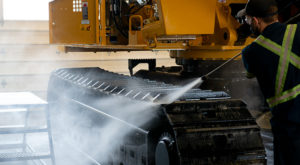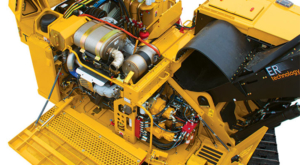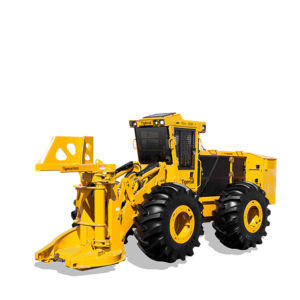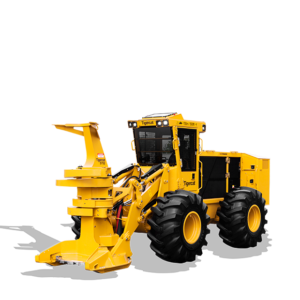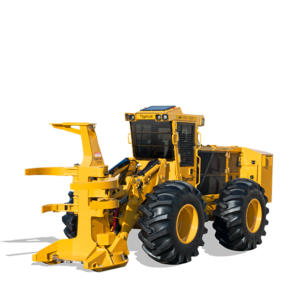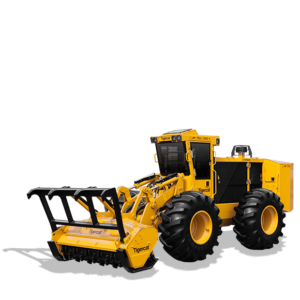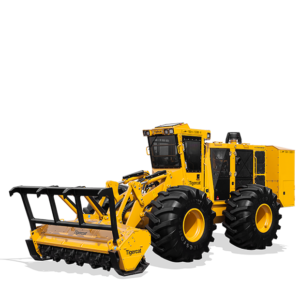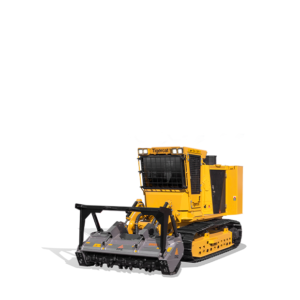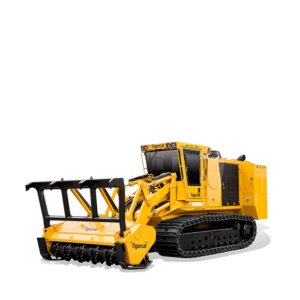Fire Safety for Feller Bunchers and Mulchers
Compared to other mobile industrial machines, equipment used in forestry has an above average risk of being damaged or destroyed by fire. Take the right steps to minimize the risk of fire. Learn more about best practices.
Logging industry fire safety publications always advise that regular and thorough removal of accumulations of woody debris from all areas of the forestry machines is without question the single best fire prevention maintenance practice. Yet all too often this recommendation is ignored. The vast majority of equipment fires are preventable and continual focus on fire prevention is the best thing that you can do to ensure that you never see your logging machine in flames. Should a machine fire occur, early detection while the fire is small is vital. This provides more time for the machine operator to stop the machine, shut off the engine, radio for help and exit to a position of safety. It also allows critical fire fighting measures to be initiated sooner, increases the chances of successfully extinguishing the fire, reduces machine damage and lessens the time and expense to return a damaged machine back into service.
Logging industry fire safety publications always advise that regular and thorough removal of accumulations of woody debris from all areas of the forestry machines is without question the single best fire prevention maintenance practice. Yet all too often this recommendation is ignored.
Often the last person on the job site to know that his machine is on fire is the operator himself — his seating position is near the front of the machine, his attention is focused straight ahead and the majority of hydraulic, electrical and engine components are located behind him. In order to minimize the operator’s sight disadvantage and increase the speed of fire detection, Tigercat installs a heat sensing, fire detection system on all mulchers and drive-to-tree feller bunchers.
The system consists of three heat sensing detectors, two located above the engine and one above the hydraulic pumps. If the temperature at any detector exceeds 177ºC (350ºF), the cab instrument panel ‘Fire Detected’ warning light and alarm buzzer are activated. In addition, the cab instrument panel ‘Stop Light’ (Engine) and warning horn is activated. It is important to note that this onboard, electrical fire detection is only a warning system. It is not a fire suppression system and it will not extinguish a fire. The system is only activated when the engine is running. It will not provide a warning when the machine is shutdown.
The Tigercat fire detection system incorporates a simple electrical circuit with a system test capability. As with any system, regular service checks and periodic maintenance are required to ensure that the fire detection system is fully operable. Failure to properly maintain the system may mean that the crucial fire detection you are counting on will be inoperative when you need it the most. Do not put your machine to work unless you know that your fire detection system is fully functional.
Refer to the Operator’s Manual to familiarize yourself with the location of all fire detection system components.
- Turn the cab key switch to the RUN position and press the cab instrument panel ‘Bulb Test’ switch to confirm that the ‘Fire Detected’ warning light and buzzer (and all other instrument panel warning lights and horn) are operating properly. This also confirms continuity of the fire detection system wiring.
- Investigate and correct any warning light, buzzer or horn malfunction before placing the machine back to work. If any parts are replaced then the Monthly System Maintenance Procedure (see below) must also be completed to confirm that the complete fire detection system is fully operational.
- While performing machine maintenance operations, visually inspect for damage to the heat detectors and their mountings. Ensure that the system wiring is not cut, pinched, frayed, kinked or loose.
- Ensure that the heat detectors are clean and free of debris, grease and dirt.
- Damaged parts should be replaced immediately. In addition, the Monthly System Maintenance Procedure must also be completed.
- Note in your machine maintenance records that all of the above work has been completed. Proper service documentation can be extremely important in maintaining your fire insurance coverage or if making a fire insurance claim.
- Turn the cab key switch to the RUN position and use a heat gun to apply heat to each of the three heat detectors for 30–40 seconds. Refer to the Operator’s Manual for more specific information. Do not use any type of flame torch to heat test the detectors. The intense heat of the flame can damage the detector.
- As the temperature at each detector reaches 177ºC (350ºF), the ‘Fire Detected’ warning light and buzzer as well as the ‘Stop Light’ (Engine) and warning horn should activate Stop heating the detector and shortly thereafter as the detector cools, the warning lights, buzzer and horn should go off. If not, investigation and corrective action is required. The purpose of this procedure is to confirm proper heat activation and reset of the heat detectors.
- Note in your machine maintenance records that all of the above work has been completed.
For further information relating to FIRE PREVENTION on forestry machines, read the SAFETY SECTION of all Tigercat Operator’s Manuals.

